




FROM THE EDITOR'S DESK: “FESTIVAL OF SACRIFICE” OR BAKRI EID
In India, Bakri Eid will be celebrated on July 10th. This Eid falls on the 10th day of Dhu al-Hijjah, which is the pilgrimage month for Muslims across the world. The day marks the end of the annual Hajj Pilgrimage, which is also called Eid Qurban. Eid al-Adha or Bakri Eid is the second most important festival in Islam. It is also called Festival of Sacrifice. Happy Bakra Eid 2022!!!
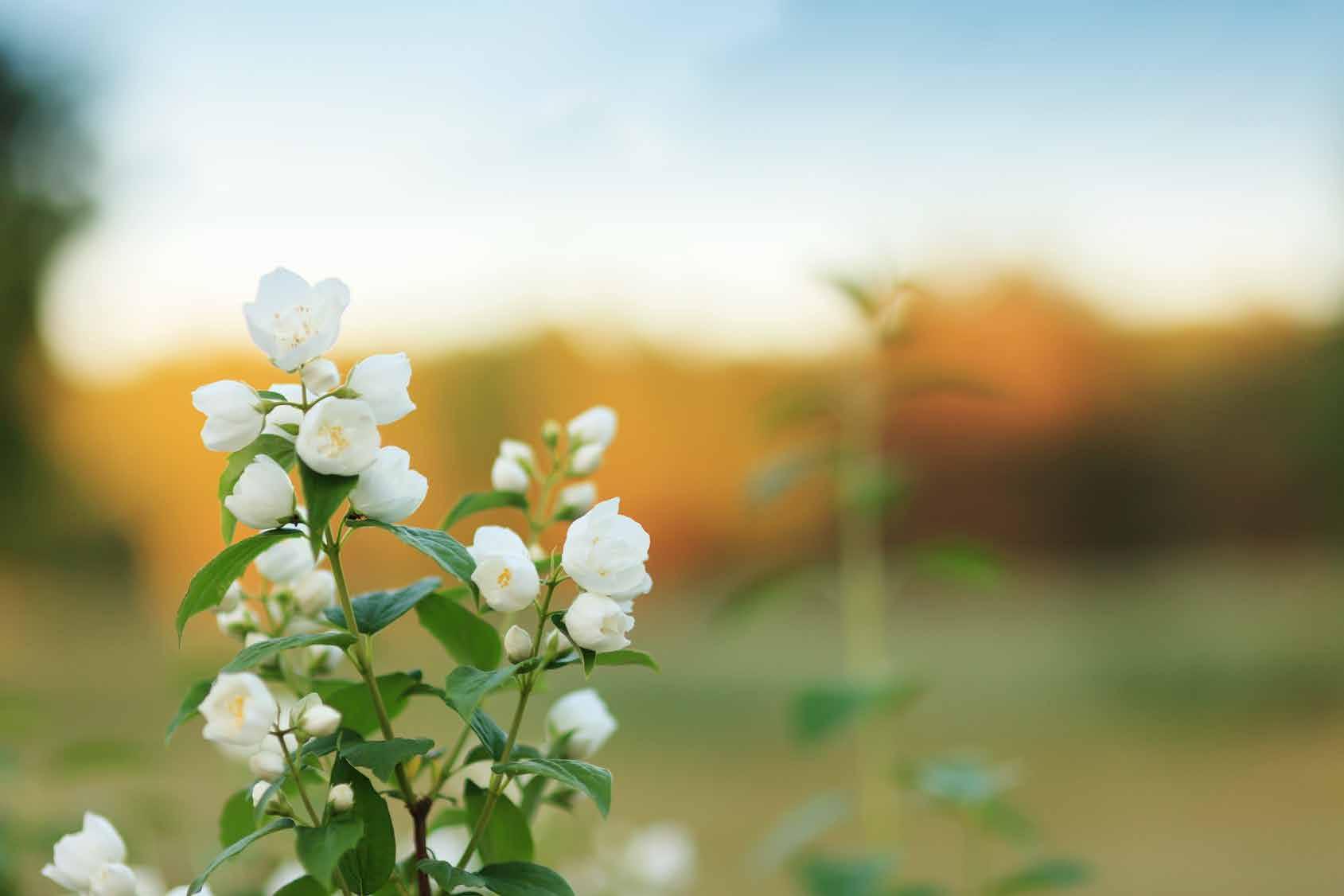
THE CULT OF THE DASNAMI NAGA SANYASIS
The Dashnami Sampradaya is perhaps the most powerful monastic order, which has played a great part in the history of India.
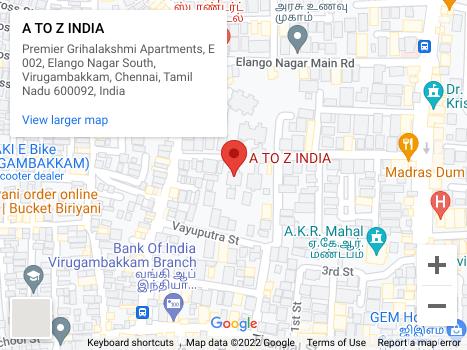
A TO Z INDIA magazine covers the Indian through his art, culture, lifestyle, religion, etc. This magazine gives an insight into the life of Indians from an angle uncovered by others. Turn to find out what it is about and to immerse yourself into an entirely different culture.
Publication Team: EDITOR: Indira Srivatsa
ASSOCIATE EDITOR: Dwarak, Srivatsa EDITORIAL CONSULTANTS: Santha, Bhavani, Srinivasan
REPORTING: Raghavan
PHOTOGRAPHY: Adithyan
GRAPHICS ENGINEER: Chandra
Editorial Office: E002, Premier Grihalakshmi Apartments, Elango Nagar South, Virugambakkam, Chennai - 600092, Tamil Nadu, India.
Communication Details: MOBILE: +91-7550160116 e.mail id: editor.indira@gmail.com Disclaimer: A TO Z INDIA Magazine has made a constant care to make sure that content is accurate on the date of publication. The views expressed in the articles reflect the author(s)

From the Editor's Desk: “Festival of Sacrifice” or Bakri Eid
The editorial talks about the Festival of Sacrifice, its history and significance.

History of Bakri Eid or Eid-ul-Adha: The story behind this festival
Bakri Eid is celebrated to honor the greatest test that God took of Ibrahim. According to legend, Ibrahim experienced nightmares in which he saw himself slaughtering his son Ishmael for God. When Ibrahim told about God’s will to his son, the latter at once agreed to get slaughtered. However, the “Shaitaan” coaxed Ibrahim to not obey God’s will. But, Ibrahim could manage to resist the temptation of Shaitaan. He hurled pebbles at the Shaitaan. That’s the reason people throw stones at the symbolic pillar during the Hajj rites. This ritual is called “Stoning of the Devil.” It marks the people’s rejection of Satan. Eventually, God was happy to see the willingness of Ibrahim and his son Ishmael for the sacrifice. God noted that Ibrahim was ready to sacrifice what was most beloved for him – his son. Impressed by this, Angel Gabriel gave Prophet Ibrahim a lamb from heaven and asked him to sacrifice this lamb instead of his son. This is how the “Festival of Sacrifice” or Bakri Eid came to be celebrated. Muslims all over the world honor Ibrahim’s commitment to obey God’s orders and Ishmael’s survival. Muslims sacrifice “bakri” or goats to mark this day.
Significance:
Eid al-Adha or Bakri Eid is the second most important festival in Islam. It is also called Festival of Sacrifice. The first most important festival is Eid-al-Fitr which is popularly called “Meethi Eid” in which Muslims celebrate the day by preparing mouth-watering sweet dishes after fasting for a month.
In India, Bakri Eid will be celebrated on July 10th. This Eid falls on the 10th day of Dhu al-Hijjah, which is the pilgrimage month for Muslims across the world. This is the 12th month of the Lunar or Islamic calendar Eid-al-Adha. The day marks the end of the annual Hajj Pilgrimage, which is also called Qurban Bayarami or Eid Qurban. Happy Bakra Eid! Enjoy reading and keep smiling!!!
God’s own country, Kerala:
Famous Churches in Kerala, India You Must Visit
VijayGod’s own country, Kerala has many surprises that will lure you to visit this state. From ancient holy sites to rich flora and fauna, everything you see here will be a treat to your eyes. Among all those places to see, you must visit the beautiful churches in Kerala. Not only do they hold immense religious value, but these churches are also symbols of architectural brilliance! So, the next time you’re making a list of the best places to visit in Kerala, make sure to add the popular churches. Don’t know which ones to add? Then, go through the list below and get to know some of the famous churches in Kerala that you must visit!
St. Mary’s Church:
Your tour can start with a visit to St. Mary’s Church in Cheriapally, as it is one of the most revered and oldest churches of Kerala. To reach here, fly to Kochi International airport and then take a cab from there. When you’re here, the first thing that will capture your attention is its intriguing architecture. You will get to see a flawless collaboration of Keralian and Persian architectural styles in this cathedral. Enter the church and gaze at the beautifully adorned interiors. Not to forget, the calm and tranquil vibe of the place will calm you down immediately.






God’s own country, Kerala:
Famous Churches in Kerala, India You Must Visit
Vijay
St. Francis Church:
Another church in Kochi that you must consider adding to your itinerary is St. Francis! Although this church was built way back in the 15th century, you will still find it standing tall and beautiful. The old architectural style will simply sweep you off your feet with its beauty. Come here between 7 am and 6.30 pm to pray to Jesus and unwind in a peaceful environment. Wondering how to get here? Hop on a flight to reach the Kochi International airport and then take a cab.
Nadamel Marth Mariam Church:
Considered the most famous church in Kerala by many, this cathedral is surely worth your visit. When you visit this church, the positive vibe and the divine aura around it will enchant you in no time. If history is your interest zone, you will be glad to know that this church has some interesting historical stories associated with it. Ask your tour guide and he can satiate your curiosity with such stories. We have one for you now! Locals say that whenever a new heir of the royal family was crowned, he would make a special offering here and meet all the religious persons associated with the church to seek their blessings. If you’re planning to visit here to listen and to know all the interesting stories, a flight to Kochi followed by a cab ride will get you there in no time!



Surgery In Ancient India
Santha
Do you know that many ideas for the present-day plastic surgery, such as the transplanting of sensible skin flaps came from ancient Indians? The following article shows the progress achieved by ancient Indians in the field of surgery 2000-3000 years ago.

'Shalya' or Surgery is, as noted in the earlier part of the work, one of the eight departments of Ayurveda. In the work of Sushruta, it occupies the first place. Medicine and Surgery, though parts of the same science, are treated as distinct branches. Charaka, Atreya, Hartia, Agnivesha, and others, are accepted as guides more in medicine than in surgery; while Dhanvantari, Sushruta, Aupadhenava, Aurabhra, Paushkalavata, and others, were rather surgeons than physicians, having written elaborate works on the art of healing by mechanical and instrumental means. In a case requiring surgical operations, the physician says to his patient, "Atra Dhanvantarinam adhikaras kriyavidhau", meaning, "It is for the surgeon to take in hand this case."
It is true the ancient surgery did not reach that perfection to which the modern science has attained. The successes of modern surgery are admitted on all hands to be prodigious, but that should not detract fro m the credit due to the ancients. The stock of surgical instruments and appliances used by the ancients was no doubt very small and meager as compared with the armamentarium of a surgeon of the nineteenth century. The reason assigned for this fact is that the instruments they used were enough for their requirements, and that their acquaintance with the properties and virtues of drugs was so very great that most of the diseases and injuries now dealt with by the surgeon were then cured medicinally. An abscess, for instance, was either made to subside by certain kinds of plaster, or the swelling was assisted to mature by means of poultices, and when ripe was opened, not always with the knife, but by the application of a mixture of Danti, Chitrak, Eranda, and some other drugs.
Cases of urinary calculi were treated with anti-lithics, and diuretics were administered so as to act as solvents for the stone, and thus the necessity of cutting was, if the patient so desired, obviated. It was only in rare cases, and for effecting a speedy recovery or affording immediate relief, that they had recourse to surgical operations. And yet their earliest works mention no less than one hundred and twenty-five surgical instruments for ophthalmic, obstetric, and other operations. They were experts in forming new ears and noses. This operation has been practiced for ages in India, where cutting off the nose and ears was a common punishment, and "our modern surgeons have been able to borrow from them (Hindus) the operation of rhinoplasty". On this subject Dr Hirschberg of Berlin says, "The whole plastic surgery i n Europe had taken its new flight when these cunning devices of Indian workmen became known to us. The transplanting of sensible skin flaps is also an entirely Indian method." The same writer also gives credit to the Indians for discovering the art of cataract-couching, "which was entirely unknown to the Greeks, the Egyptians, or any other nation." The cataract operations are, it is said, performed by Indian practitioners with great success even to this day. The Hindus were also experts in performing amputations and abdominal section. They could set fractures and dislocations in men and beasts, reduce hernia, cure piles and fistulain-ano, and extract foreign bodies. Inoculation for small-pox seems to have been known to them from a very early age.
Long before Edward Jenner was born, certain classes in India, especially cow-herds, shepherds, Charanas, and
Ancient Indian surgical practices:
Surgery In Ancient India
Santha
the like, had been in the habit of collecting and preserving the dry scabs of the pustules. A little of this they used to place on the forearm, and puncture the skin with a needle. In consequence of this inoculation, the classes are supposed to have enjoyed a certain amount of immunity from small-pox.

Dr Huillet, of Pondicherry, assures us that "Vaccination was known to a physician, Dhanvantari, who flourished before Hippocrates." The ancient Hindus used to practice the dissection of the human body, and taught it to their disciples. They knew human anatomy and something of physiology. "The Hindu philosophers," says Dr Wise, "undoubtedly deserve the credit of having, though opposed by strong prejudice, entertained sound and philosophical views respecting uses of the dead to the living; and were the first scientific and successful cultivators of the most important and essential of all the departments of medical knowledge practical anatomy." It may as well be added that they were perfectly acquainted with the anatomy of the goat, sheep, horse, and other animals used in their sacrifices. Early warfare was conducted with such weapons as bow and arrow, sword, mace, etc. Thus, in every war the services of bold and skillful surgeons were always in requisition for extracting arrows, amputating limbs, arresting hemorrhage, and dressing wounds.
Sushruta gives very minute directions to be observed in the performance of surgical operations, and describes the method of opening abscesses, treating inflammations, boils, tumors, ulcers and fistulas, and of applying blisters, cautery, etc. The constant wars and internecine strife afforded ample opportunities to the surgeons to distinguish themselves in their profession and acquire considerable dexterity in their work. A glance at the Vedic or the Epic period will bear testimony to this fact. The chirurgeons of yore are recorded to have performed incredible feats in surgical operations, just as modern surgery is able to do many things which ordinary folks will hardly believe to be possible. In its onward progress, modern surgery may yet be able to succeed in doing what the ancients claim to have performed. Sushruta classifies surgical operations into Aharya, extracting solid bodies; Bhedya, excising; Chhedya, incising; Eshya, probing; Lekhya, scarifying; Sivya, suturing; Vedhya, puncturing; and Visravaniya, evacuating fluids.
The surgeon, before commencing an operation, is enjoined to equip himself with all the requisites, such as the instruments, salts, bandages, honey, oil, water, etc. He should have practical experience of his art, and should have seen many surgical operations performed by others. He should be intelligent, steady, skillful, and should execute his work with a light hand. He should have by his side steady and strong attendants to assist him. The patient should be allowed to take light food before any operation is performed upon him. Abdominal operations, however, and operations in the mouth, or about the anus, should be performed when the patient is fasting. The operation should be performed with the utmost care; and after it is over, a sesamum poultice should be applied to the wound, and a cloth bandage should be tied round it. A certain incense should be kept burning In the operation room. The surgeon should not leave his patient without offering a prayer to the Almighty for his speedy recovery. Particular attention is to be paid to the regimen of the patient. The wound must be dressed at regular intervals until it is all healed up. Should the wound cause intense pain, a cloth soaked in tepid ghee (clarified butter) mi xed with liquor-ice may be applied to it.
Ancient Indian surgical practices:
Surgery In Ancient India
Santha

The surgical operations are performed on what are considered auspicious days. The patient is made to sit or stand with his face to the east, the surgeon before him with his face to the west. The surgeon should be cautious that no vital part, artery, vein, joint, or bone is carelessly injured in the course of the operation, and that the instrument does not go deeper than the requirements of the case actually demand. In serious surgical operations, and in diseases of a painful nature, the patient was made insensible by the administration of anesthetics.
In cases of children, or of patients having a dread of the knife, or where the proper instruments cannot be procured, bamboo, crystal, glass, Kurvinda (a kind of stone), leeches, fire, caustics, nail, Kareera (Capparis aphylla), Shefali (Vitex Negundo), hair and finger may be made use of. They are called Anushastras or substitutes. Sharp pieces of bamboo bark or pointed crystal, glass, or Kurvinda may be employed as incisive instruments. The nail may be used in extracting a solid body, leeches in extracting blood, and hair, finger or vegetable sprout for probing. Caustics are used in opening abscesses, and fire (live charcoal) is applied to snake-bites and to wounds that are intensely painful.
Thus, there are three modes adopted by the Hindus for treating surgical cases by cutting instruments, by caustics, and by actual cautery. In the opinion of Sushruta, caustic is better than the knife, and cautery better than either. In order to acquire dexterity in surgery, the preceptors made their pupils practice different operations on various substances.
The art of Surgery gradually declined in India owing to a variety of causes, the chief among them being the aversion of the Brahmanas, who had the monopoly of teaching the various sciences, to animal food and to the sacrificial offerings which were too common in the pre-Buddhist period. This aversion made them shrink from touching the carcasses necessary for anatomical demonstrations. They also shrank from coming in contact with blood, pus, and other matter, which cannot be avoided in performing surgical operations. Surgery being neglected by the priestly caste, passed into the hands of the lower classes, whose practice was purely empirical. Even these people, for want of encouragement, allowed it to decline, until, as Mr Elphinstone rightly remarks, bleeding was left to the barber, bone- se tting to the herdsman, and the application of blisters to every man.


French town of Pondicherry, India:
14, Saint Gilles Street, Pondicherry, 605001, India
Dinesh
Image of the Month: House called Grace
Your steps through its Door: 14, Saint Gilles Street, Pondicherry, 605001, India
Title: Chatting on Doorsteps
Description: Private house called Grace, this house belongs to Sri Aurobindo Society and it’s located in heart of the French town of Pondicherry.
Note: The purpose of this page is to create awareness among the people about the architecture & culture of Pondicherry. A TO Z INDIA, Pondicherry has captured the heritage of Pondicherry through its lens and dedicates this visual treat to the entire world. We take this opportunity to thank all the house owners & business people of Pondicherry for their Co-operation.
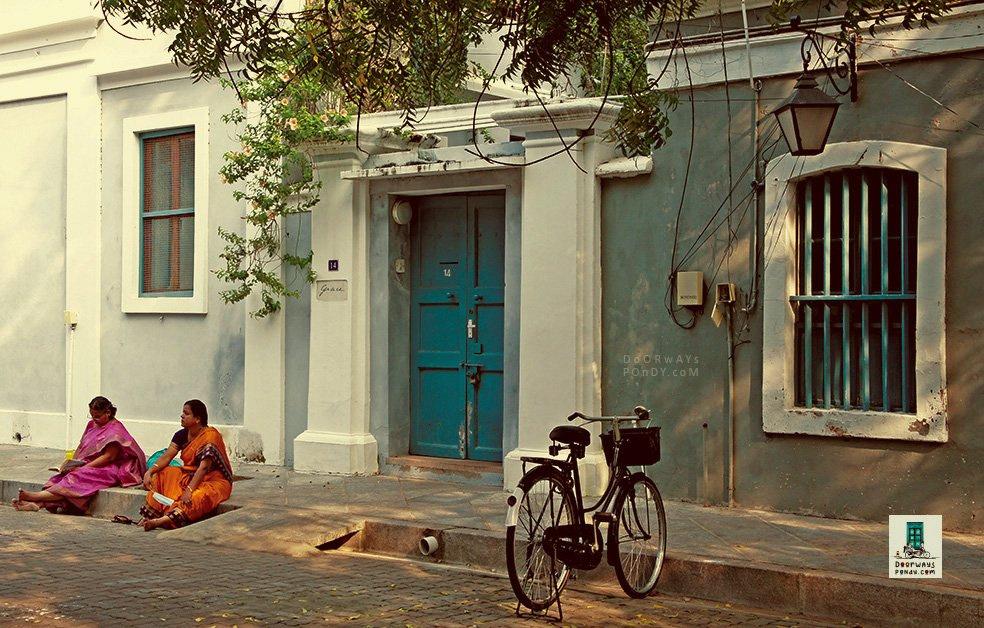

Tiruvanaikovil Arulmigu Jambukeswarar Akhilandeswari Temple
Raghavan
This temple is one among the ‘Pancha Bhoota Sthalam’ - refers to as the five temples dedicated to Shiva, each representing a manifestation of the five prime elements of nature - earth, water, fire, air and aether. Though this grand temple occupies approximately 18 acres with a massive fourth precinct measuring 2436 feet by 1493 feet, the entrance to the sanctorum of Jambukeswara (Shiva worshipped here in the form of Varuna Lingam, Consort Akilandeswari Amman) is just 4 foot high and 2.5 foot wide.
In the views of James Fergusson (British Architectural Historian, 1808-1886), Thiruvanaikoil temple excels the Srirangam Ranganathaswamy temple in many architectural aspects. The temple has five “Praharams” (enclosures), each wall's height ranging from 20-30 feet and 2 to 5 feet thickness. The 2nd and 3rd praharams were built in early 13th century CE and the 4th Praharam was constructed in the late 13th century CE. The impressive outer wall covering the 5th precinct stretches over a kilometer and is two feet thick and over 25 feet high was constructed by 'Thiruneetru Sundara Pandiyan'.
The Temple is one of the 275 Paadal Petra Sthalams. Thirunavukkarasar on worshipping the Shiva at Thiruvanaikkaval wrote:
Place: Jambukeswarar Temple, Thiruvanaikaval, 10kms away from Trichirapalli, Tamilnadu.
P rio : T mpl ’ s rli st xist n t s k to st- n ntury CE y Chol King “Ko Ch ngot Chol n ” ( காச சஙகட சாழ நாயனார lso ll s Ch nk nn n - R y king). H h uilt oth r Shiv t mpl s n is on mong th “N y nnm rs ” (Holy S ivit s ints).
Various Kings of Chola, Pandiya, Hoysala and Vijayanagar Nayakar dynasties have contributed for the upkeep of this temple and performed various renovations and constructions. There are 156 inscriptions from various Chola kings from 10th - 12th century indicating grants to the temple - earliest one from Paranthaka Chola (907-950 CE). The temple was widely expanded by Hoysala king Someswara, a strong devotee of Shiva in the later 13th Century CE. Many later additions were made in the 19th century by Nagarathar.


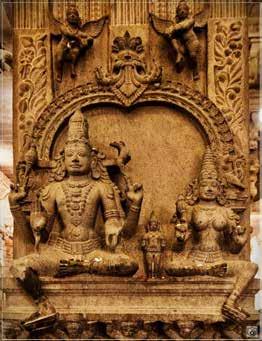
Site History:
Tiruvanaikovil Arulmigu Jambukeswarar Akhilandeswari Temple







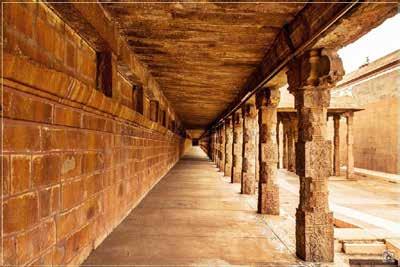
"Why is Lord Kedarnath called 'Jagrut Mahadev'?"

"Why is Lord Kedarnath called 'Jagrut Mahadev'? This two minute story will give you goosebumps"
Once a Shiva devotee left his village on a journey to Kedarnath Dham. Long ago, during that period there were no facilities for transportation, so he travelled on foot. Whoever he met on the way, he would ask the path for Kedarnath. He used to meditate Lord Shiva in his mind. He passed months walking. Finally one day, he reached Kedar Dham. In Kedarnath temple, doors will open only for 6 months and will remain closed for the next 6 months. He arrived at the time when the temple doors were closing. He told Pandit ji that he has come from a long distance after traveling for months. He prayed to Pandit ji, "Please open the doors and let me see the Lord." But there is a rule, once closed, the doors will not be re-opened for the next 6months. Rules are rules. So, he cried a lot. He remembered Lord Shiva again and again, he payed to the God to just give him darshan once. He was praying for a long time and loudly but nobody listened to his prayers.
Later, Pandit ji came and told him to come there only after 6 months, and that only after 6 months the doors would open. 6 months of snow and cold was yet to come. And everyone left the place. He kept crying over and over. That night, he continued crying and it became dark all around. But he had faith on his Shiva, that he would definitely bless him. He was very hungry and thirsty too. He heard someone coming. He saw a 'monk baba' coming towards him. The 'sanyasi baba' came to him and sat beside him. He asked him, "Where did you come from Son?". He told him about the whole situation and said, his coming there was in vain to the Baba ji. Baba ji explained to him the entire rules and also gave him food. And then Baba kept talking to him for a long time. Baba ji felt pity on him. He said, "Son, I think the temple will open in the morning. You will definitely have a darshan of Lord Shiva."
Nobody knew when this devotee fell asleep while talking to the Baba ji. When the devotee's eyes opened, he saw the light of the sun. He searched for the Baba here and there, but he was nowhere. Before he could understand anything, he saw Pandit ji was coming back along with his whole group. He bowed down to the priest and said, "Yesterday you had said that the temple will open only after 6 months? And in the meantime no one would come here, but you came this morning". Pandit ji looked at him carefully, tried to identify him and asked, "Are you the one who came when the door of the temple was closed? The one who came here 6 months ago!". The man was surprised and said, "No, I didn't go anywhere. You met me yesterday, I slept here the whole night. I haven't gone anywhere". Pandit ji wasn't surprised.


"Why is Lord Kedarnath called 'Jagrut Mahadev'?"
Mithun

The man added, "They say I had went home 6 months ago after the temple was closed and only today I had come back after 6 months. But how could one live here for six months?" Pandit ji and the whole group were surprised. How could a single person survive for six months in that cold. Then that devotee told him about his meeting with the Sanyasi Baba and all the things he had talked with him... That a monk came, he was tall, large, with a trishul in one hand and a drum in the other hand, wearing an antelope. Pandit ji and everyone else fell at the man's feet. Pandit ji explained to the man that he spent his entire life but could not get the darshan of God, but he was the true devotee of Lord Shiva. "You have visited Lord Shiva in reality. Lord Shiva had turned your 6 months into one night with his yoga-maya. Shiva had shortened the entire period. It all happened because of your pure holy mind and true faith. Salute to your devotion".


Tringalwadi Fort
Walkthrough the clouds, jump in natural pools, feel peace and faith at Hanuman temple, play with the winds, explore beautiful views, enjoy wild waterfalls, and breathe in the monsoon's freshness, on your trip to Tringalwadi Fort, experience being alive.
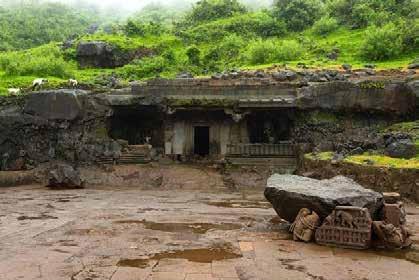




ஸர கணணபிராேன ேபாறறி... ஆனமகம:
தமிழினியன
அைனவ�க�ம அனபடன இனிய
காைல வணககம... !!!
பாலன றன��வாய ஏழல�ண�, ஆலிைலயின
ேமலன� நவளரநத ெமயெயனபர,ஆலன�
ேவைலந �ளளேதா விணணேதா
மணணேதா?,
ேசாைல�ழ �னெற�ததாய ெசால�... !!!
ெபா�ள:
உலகபபிரளயம உணடான காலததில,
உலகி�ளள ஏழ உலகஙகைளயம
உண�, சி��ழநைதயாகத தி�வ�வ
ேமறெகாண�, ஆலநதளிரினம�
தி�ககண வளரநத�ளிய� உணைம
என� உணரந� ைவததி�ககினற
ஆனேறார எ�த�ைரத�ளளளனர.


Famous Temples of India:
Puri Jagannath Temple Kitchen PadmanabhanSri Jagannath is the Lord of the Universe. His kitchen is considered as the largest and the biggest kitchen in the world. It is situated south-east direction of the outer compound of Srimandir. The length of the kitchen is 150 feet, breadth is 100 feet and height is about 20 feet. It consists of 32 rooms with 250 earthen ovens within these. Around 600 cooks (Suaras) and 400 assistants serve here everyday for preparing Lord's food. There are three types of hearths in the kitchen of Srimandir such as Anna Chuli, Ahia Chuli and Pitha Chuli.
The dimension of hearths where rice is prepared are 4' x 2.5' x 2'. The rectangular space created between two rice hearths is called Ahia. All types of Dal and Curry items are cooked in Ahia Chuli. There are only ten numbers of Pitha Chuli in the temple kitchen which are made of cement.



The fire of this kitchen is known as Vaishnava Agni, because it is the fire in the kitchen of Lord Jagannath and used to serve Vishnu Himself. It is never put out.
The fire of this kitchen is known as Vaishnava Agni, because it is the fire in the kitchen of Lord Jagannath and used to serve Vishnu Himself. It is never put out.
Puri Jagannath Temple Kitchen feeds 100,000 people every day and is the world's largest open air kitchen. You will be shocked to see the scale of operations there. There are certain people in each action. Some men pull water from a well, some are in charge of cutting vegetables, some are in-charge of cutting wood and some in charge of cooking. Food is prepared using only pottery; 15,000 pottery utensils are used daily and none of them are recycled. Food is prepared using a unique technique. Seven pottery


are arranged on top of each other, protected by jute ropes, and then the whole setup is placed on burning wood. Every time, things on the top are cooked first and the order remains the same till the bottom of the pot. Every day, 56 items are cooked and offered to Lord Jagannath as prasad, after which it becomes Mahaprasad (blessed food). Then, around 2-3 pm, visitors and devotees get to buy Mahaprasad at a place called Anand Bazar inside the campus. Mahaprasad is spectacular and a single piece of it is never wasted.
It is believed that Mahalaxmi cooks in the kitchen Herself; all are felt to be Her servants. As she is not attentive to the cooking on the days when Lord Jagannath is said to be sick before Rath Yatra, the food is less tasty. During Ratha Yatra when Lord Jagannath is in Sri Gundicha Temple, She is said to



have no zeal to cook and so the food is tasteless. It is also said that if mother Laxmi is displeased with the preparations by the cooks, a dog will appear mysteriously on the temple grounds. If the dog is seen, all the food must be buried and prepared again. As no dog is allowed to enter the temple, this dog is said to be Kutama Chandi, a tantric goddess in charge of purification of food.
Four types of cooking are prepared in the kitchen of Srimandir. Those are Bhimapaka, Nalapaka, Souripaka and Gouripaka. The food in the temple kitchen is prepared in such a pure way and with deep devotion; great spiritual impact is felt, both by those who cook and those who eat. The temple kitchen of Lord Jagannath is considered to be the biggest hotel in the world, serving all without reservation or previous notice.












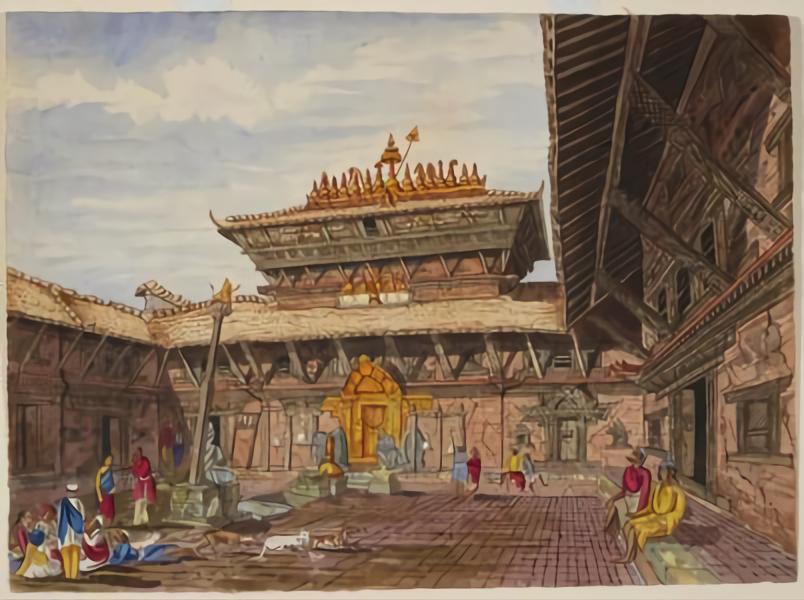







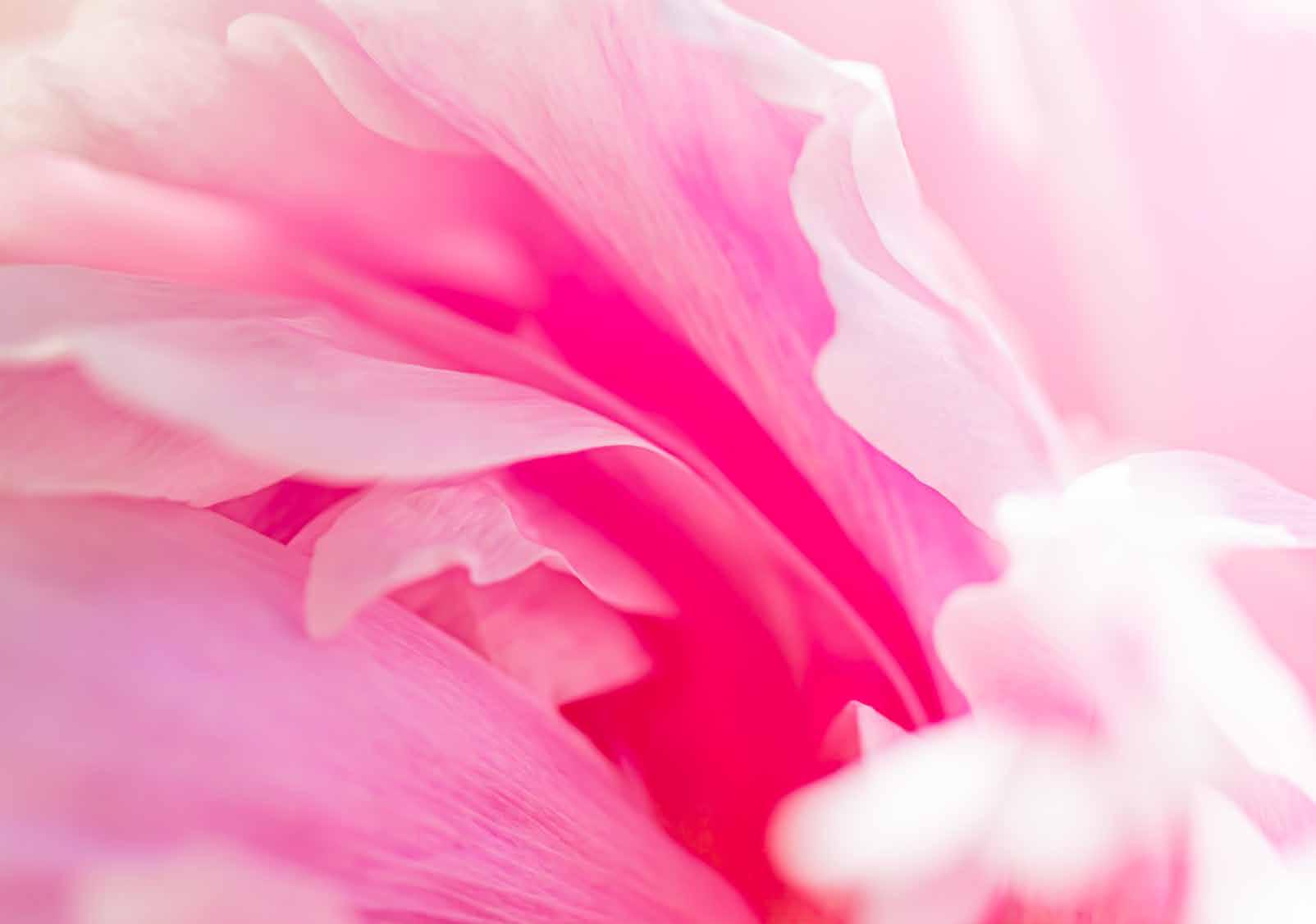








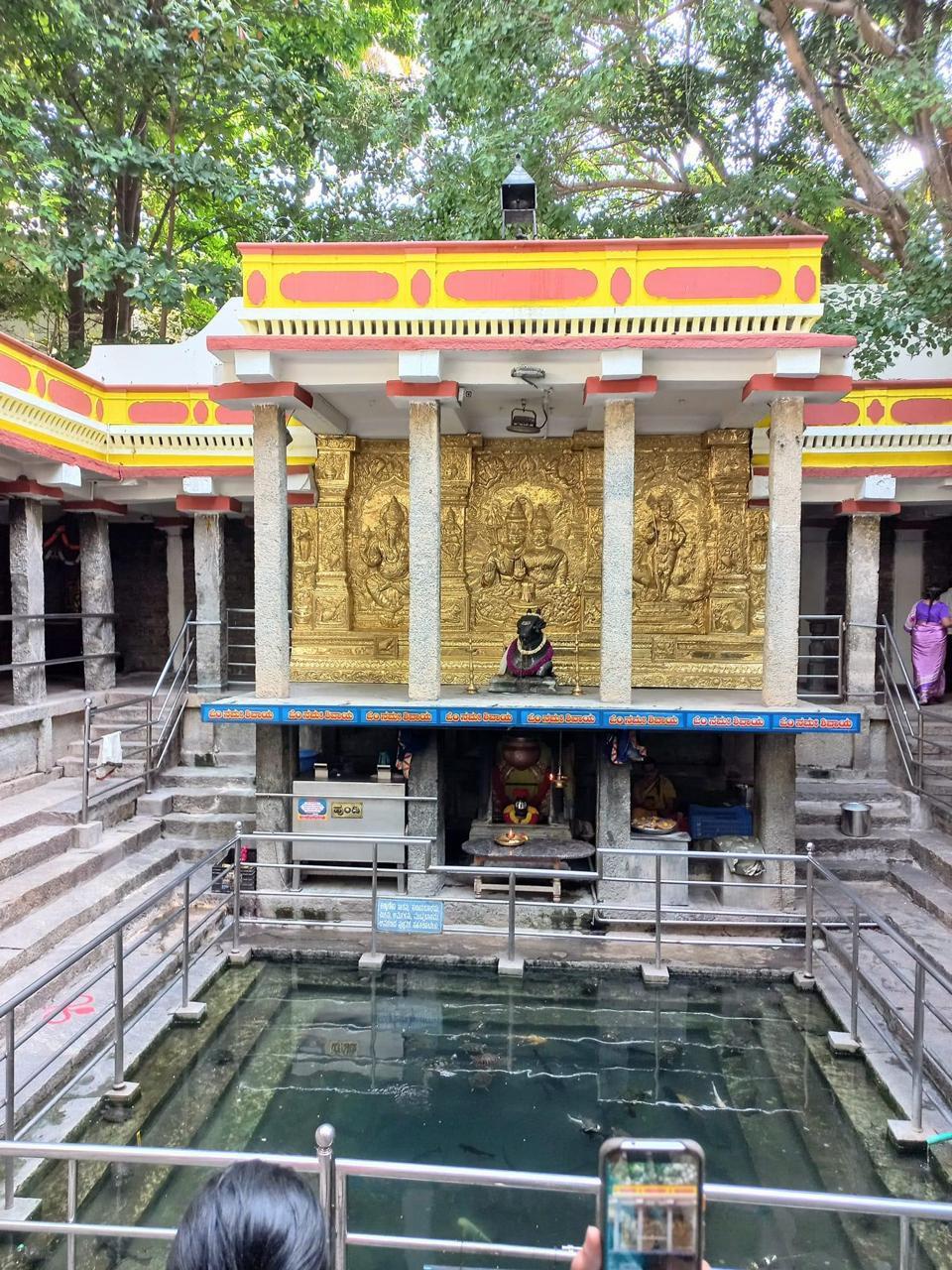


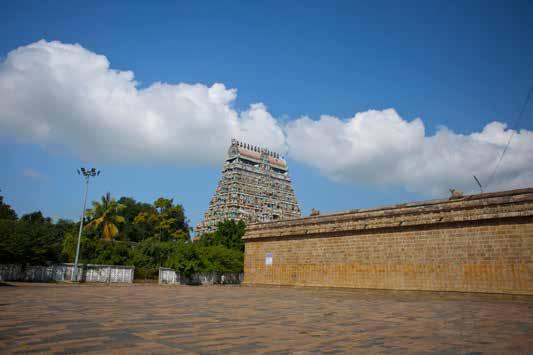
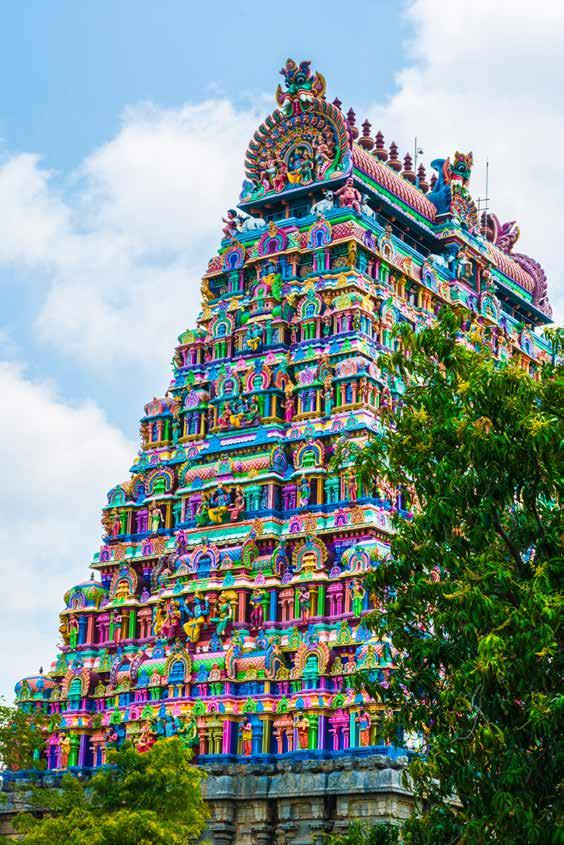











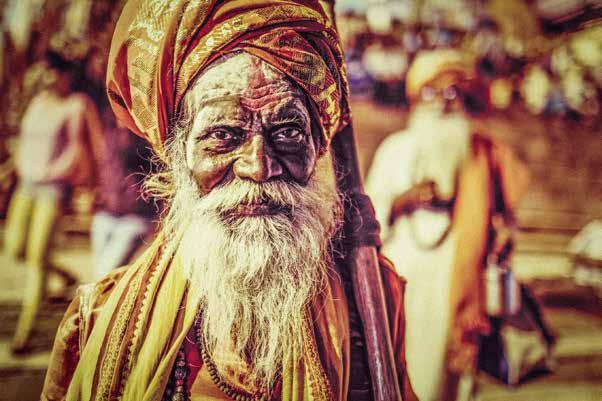
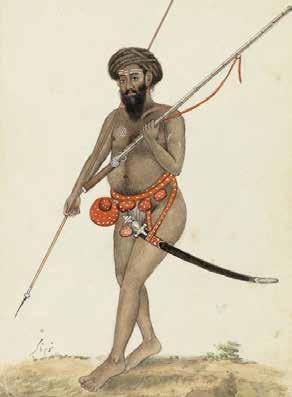

 Mahima
Mahima



